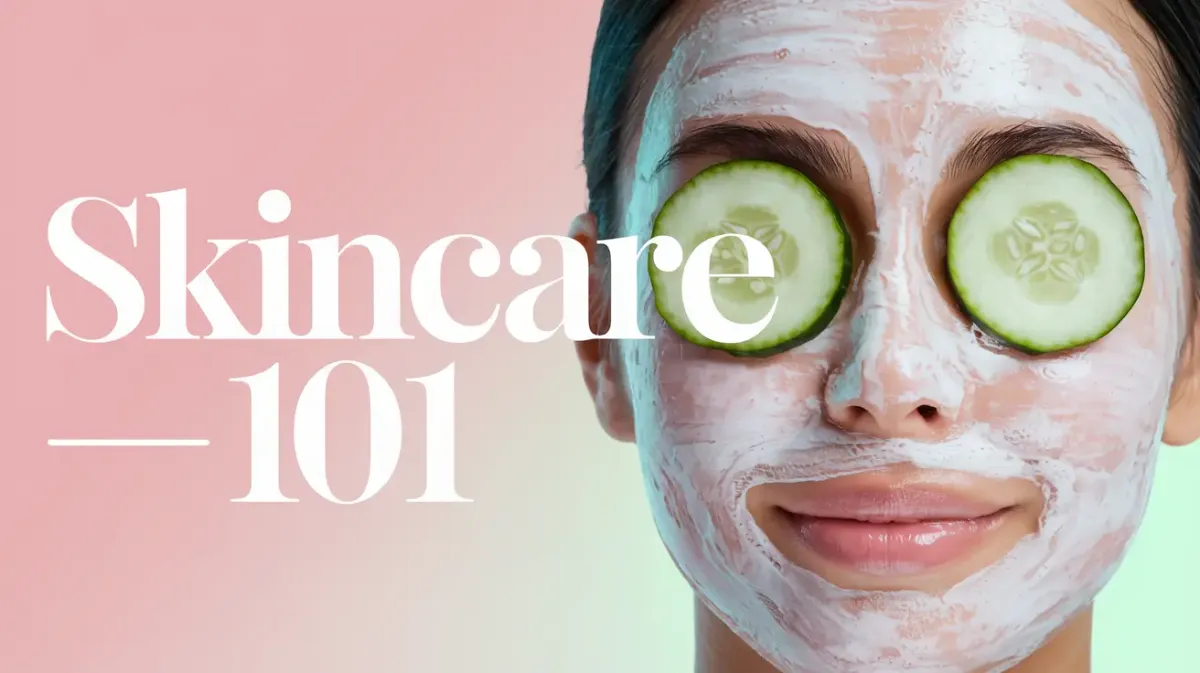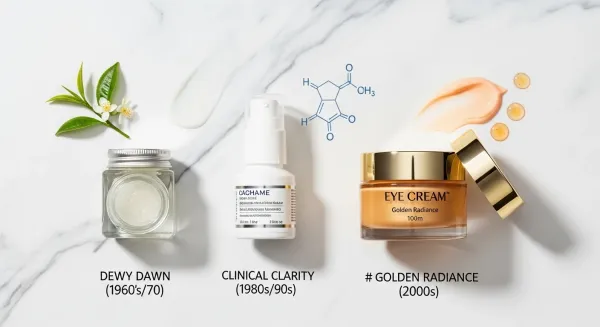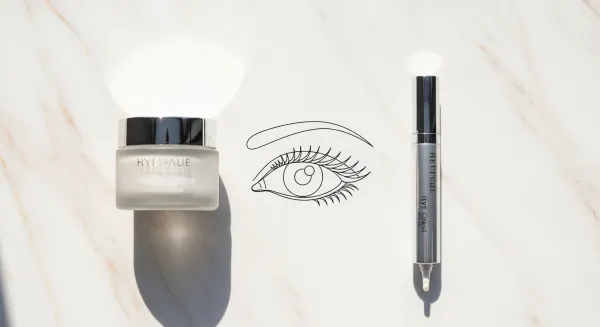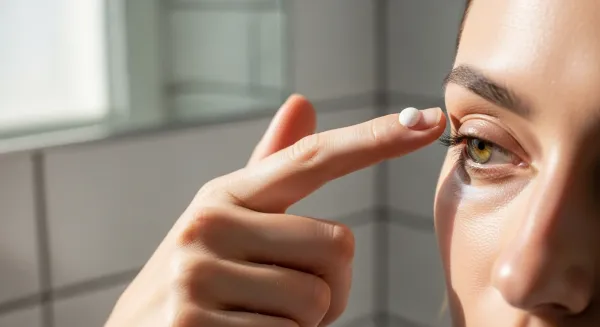How to Check If Skincare is Expired: A Comprehensive Guide to Keeping Your Skin Safe
Learn how to check if skincare is expired and keep your skin safe with our easy guide!

Skincare is essential for maintaining healthy and radiant skin, but just like food, skincare products can expire.
Understanding how to check if skincare is expired is crucial for keeping your skin safe and effective.
This guide will provide you with the knowledge you need to identify expired products and ensure your skincare routine is always beneficial.
How to Check if Skincare is Expired — Quick Summary
Quick Picks
How to Check if Skincare is Expired
- Find the PAO symbol (e.g., 6M/12M) and retire the product once that window has passed from first opening.
- Use the batch code to estimate the manufacture date when no expiry is printed.
- Do a smell check: rancid, sour, or sharp chemical odors suggest oxidation or contamination.
- Inspect color: darkening, yellowing, or fading (e.g., vitamin C turning orange-brown) often means oxidation.
- Check texture for separation, curdling, clumps, or unexpected thinning/thickening.
- Watch performance: new stinging, pilling, or weaker results can signal degraded actives.
- Assess the packaging: swollen tubes, clogged droppers, or leaking pumps point to instability.
- Look for visible growth (dots, strings, fuzz) and discard immediately if seen.
- Follow category rules: don’t use expired SPF or acne medications where potency is safety‑critical.
- Consider storage history: heat/sun exposure shortens life—if unsure, replace.
Note: Always follow the product label and discard if in doubt.
Key Takeaways about How to Check If Skincare is Expired
- Check the expiration date on skincare products to avoid using expired items.
- Look for changes in smell, texture, or color as signs that a product has gone bad.
- Store products in a cool, dry place to extend their shelf life.
- Use clean tools to apply products and prevent contamination.
- Regularly review your skincare collection to keep track of expiration dates.
Understanding Skincare Expiration Dates
When it comes to our skincare products, understanding expiration dates is super important. These dates tell us how long our products are safe to use.
What Expiration Dates Really Mean
Expiration dates on skincare products indicate the time frame in which the product is expected to remain effective and safe to use. Most products have a shelf life of about 30 months when unopened.
After opening, the shelf life can vary:
| Product Type | Shelf Life (After Opening) | Notes |
|---|---|---|
| Moisturizers | 6–12 months | Watch for texture or smell changes |
| Serums | 6–12 months | Vitamin C may oxidize faster (3–6 months) |
| Sunscreens (SPF) | 6–12 months | Must follow FDA expiration date if listed |
| Eye Creams | 6–12 months | Use caution—delicate eye area |
| Cleansers | 12–24 months | Longer due to fewer active ingredients |
| Toners / Essences | 6–12 months | Especially shorter if alcohol-free |
| Face Oils | 12–24 months | Store away from heat/light; can go rancid |
| Masks (cream/clay) | 6–12 months | Jar packaging = higher contamination risk |
| Makeup (foundation, powders, mascara, lipsticks) | 3–24 months | Mascara shortest (~3–6 months) |
How to Read Expiration Symbols
To find out how long a product lasts, look for the Period After Opening (PAO) symbol.
It looks like a little jar with a number inside, like "6M" for six months. This means you should use the product within six months after opening it.
Why Expiration Dates Matter
Using expired products can lead to skin irritation or infections.
| Product Category | Unopened Shelf Life | After Opening Shelf Life |
|---|---|---|
| Moisturizers / Lotions | ~30 months | 6–12 months |
| Sunscreens (SPF) | ~3 years (if sealed) | 6–12 months |
| Vitamin C Serums | ~18 months | 3–6 months |
| Retinol / Retinoids | ~24 months | 6–9 months |
| Natural / Preservative-Free Products | 12 months or less | 3–6 months |
| Powder Makeup | ~3 years | 24 months |
| Liquid Makeup (foundation, concealer) | ~30 months | 6–12 months |
| Mascara / Eyeliner | 24–30 months | 3–6 months |
It’s crucial to toss products that have passed their expiration date. Not only can they be ineffective, but they can also harbor bacteria that can harm our skin.
Remember, keeping track of our skincare products is part of taking care of our skin! Let’s make sure we’re using fresh products for the best results.
📌 Understanding Skincare Labels & Regulations
Batch Codes & Lot Numbers
Every skincare product has a batch code or lot number, usually printed on the bottom of jars, bottles, or boxes.
- These codes tell you when and where the product was manufactured.
- You can use free online tools like CheckFresh or CheckCosmetic to decode them.
- If a product has no printed expiration date, the batch code can help you estimate its age.
PAO Symbol vs Expiration Date
Ever noticed a little open jar icon on your products with “6M” or “12M” inside?
- That’s the Period After Opening (PAO) symbol. It means the product is safe for that many months after opening.
- Example: “12M” = safe to use for 12 months after first opening.
- Not all products use PAO symbols: in the U.S., cosmetic expiry dates aren’t mandatory. In the EU, the PAO is required if the shelf life exceeds 30 months.
FDA vs EU Guidelines
Skincare regulations differ across markets:
- United States (FDA):
- OTC (over-the-counter) products like sunscreen and acne treatments must list an expiration date.
- For regular cosmetics (moisturizers, serums, cleansers), manufacturers aren’t legally required to provide expiry dates, but they must ensure the product remains safe.
- European Union (EU):
- Products with less than 30 months of shelf life must show a “best before” date.
- Products with more than 30 months durability must use a PAO symbol after opening.
Do Unopened Skincare Products Expire?
Yes — even if unopened, skincare products do expire:
- Most unopened items last 24–30 months.
- Actives like Vitamin C or Retinol may degrade faster, even sealed.
- Always check the batch code if no expiration is listed.
Quick Label Guide (Table)
| Label / Symbol | What It Means | Example |
|---|---|---|
| Expiration Date | Last day the product is guaranteed safe & effective. | “EXP 06/2026” |
| Best Before Date | Required in EU if product <30 months shelf life. | “Best Before: 12/2025” |
| PAO Symbol (open jar) | Safe months after opening. | “12M” = 12 months |
| Batch Code / Lot Number | Factory code → check with online tools. | “L20345A” |
Signs Your Skincare Has Expired

When it comes to our skincare products, we all want to keep our skin looking fresh and healthy. But how do we know if our favorite creams and serums have gone bad?
Here are some signs to watch out for:
Changes in Smell and Texture
One of the first things we should check is the smell of our products.
If something smells off or rancid, it’s time to toss it. A funky smell is a clear sign that the product has expired! Also, if the texture feels different—like it’s become lumpy or too runny—don’t use it.
Color Alterations to Watch For
Next, let’s talk about color.
If you notice that your product has changed color, especially with vitamin-based serums that can turn brownish, it’s a red flag. Always keep an eye on how your products looked when you first bought them. If they look different now, it’s best to say goodbye.
The Tingle Test: When to Be Cautious
Finally, we have the tingle test.
If a product starts to sting or tingle when you apply it, and it didn’t do that before, it’s a sign that something’s not right. Better safe than sorry—if it feels weird, just bin it!
Here’s a quick summary of what to look for:
| Sign | What It Means |
|---|---|
| Smell is rancid / sour | Oils have oxidized, bacteria possible |
| Texture changes | Separation, clumps, or too runny |
| Color darkened / yellowed | Actives (Vitamin C, Retinol) oxidized |
| Burning / tingling on skin | Expired or contaminated |
| Expiration date passed | Don’t risk it — discard |
Remember, using expired products can lead to skin irritation or infections. Let’s keep our skin safe and healthy by checking our products regularly!
✅ Skincare Expiry Checklist
Use this simple checklist to decide if it’s time to replace your product:
- Check expiration date or best before date on packaging.
- Look for the PAO symbol (open jar icon such as “6M” or “12M”).
- Examine batch code / lot number (use tools like CheckFresh).
- Smell for rancid or sour odors → sign of oxidation or microbial growth.
- Check for color changes (Vitamin C browning, retinol yellowing).
- Look for texture separation, clumps, or curdling.
- Test on skin: unusual tingling or burning = discard.
- Consider formula: natural or preservative-free products expire faster.
- Review packaging type: jars spoil faster than pumps or tubes.
- Ensure proper storage: cool, dry, away from sunlight & humidity.
- Discard expired SPF/sunscreens — FDA requires expiration dates.
- Maintain hygiene: no finger dipping, use clean spatulas or pumps.
- Do a patch test if you’re unsure before applying fully.
The Risks of Using Expired Skincare
Potential Skin Reactions
Using expired skincare can lead to some pretty nasty skin reactions.
Imagine slathering on a cream that’s past its prime and waking up with a rash!
It’s not just uncomfortable; it can also lead to long-term skin issues. We should always be cautious and check our products before using them.
Bacterial Growth and Contamination
Expired products can become a breeding ground for bacteria.
When we use these products, we risk introducing harmful germs to our skin. This can lead to infections or even worsen existing skin conditions. To keep our skin safe, let’s toss those old products!
Loss of Product Efficacy
Another risk is that expired skincare just doesn’t work as well.
Ingredients can break down over time, meaning we might not get the benefits we expect. For example, if we’re using a sunscreen that’s expired, it might not protect us from harmful UV rays. So, it’s crucial to keep track of our products and replace them when needed.
Remember, using expired skincare is like playing with fire. It’s better to be safe than sorry!
How to Properly Store Your Skincare Products
When it comes to keeping our skincare products fresh and effective, proper storage is key!
Here’s how we can do it:
Ideal Storage Conditions
- Keep it cool and dry: Storing our products in a cool, dark place helps prevent them from going bad too quickly.
- Avoid the bathroom: The humidity from showers can mess with our products. Instead, try a drawer or a shelf away from moisture.
- Mini-fridges are a fun option! Some people even use mini-fridges for their skincare to keep everything extra fresh.
The Importance of Clean Tools
- Always use clean hands or tools when applying products. This helps prevent bacteria from getting into our creams and serums.
- If a product comes in a jar, consider using a spatula or cotton swab to scoop it out instead of our fingers. This keeps it cleaner!
- Regularly clean our makeup brushes and tools to avoid transferring dirt and oils back into our products.
Why You Should Avoid Direct Sunlight
- Sunlight can break down ingredients: Direct sunlight can cause our products to lose their effectiveness. Keep them in a dark place!
- If we have products that are sensitive to light, like vitamin C serums, it’s even more important to store them away from sunlight.
- Check for packaging: Some products come in opaque containers to protect them from light, which is a great feature to look for!
By following these simple storage tips, we can help our skincare products stay effective and safe for longer. Let’s keep our skin happy!
Tips for Keeping Track of Your Skincare Products

Labeling and Dating Your Products
One of the easiest ways to keep track of our skincare is to label each product with the date we opened it.
This helps us remember when it’s time to toss it out. A simple Sharpie can do the trick!
Using a Product Inventory System
We can also create a product inventory to track what we have.
This can be as simple as a list on our phone or a spreadsheet. Here’s a quick table to help us get started:
Product Name | Date Opened | Expiration Date |
|---|---|---|
Moisturizer | 01/01/2023 | 07/01/2024 |
Serum | 02/15/2023 | 08/15/2024 |
Sunscreen | 03/10/2023 | 09/10/2024 |
Regularly Reviewing Your Skincare Collection
Let’s make it a habit to check our skincare collection every few months.
This way, we can spot any products that might be nearing their expiration dates. Here are some quick tips:
- Check for changes in smell or texture. If something smells off, it’s time to say goodbye.
- Look for color changes. If a product has changed color, it’s best to toss it.
- Use the Tingle Test. If a product that used to feel nice suddenly stings, it’s a sign to stop using it.
By keeping track of our skincare products, we can ensure we’re using safe and effective items. Let’s keep our skin happy and healthy!
When to Replace Your Skincare Products
General Guidelines for Product Lifespan
When it comes to skincare, knowing when to toss out old products is super important.
Most skincare items last between six months to a year after opening. Here’s a quick guide:
Product Type | Lifespan |
|---|---|
Moisturizers | 6-12 months |
Serums | 6-12 months |
Sunscreens | 1 year |
Eye Creams | 6-12 months |
Makeup | 3-12 months |
Specific Timelines for Common Products
Let’s break it down a bit more:
- Moisturizers: Usually good for about 6-12 months.
- Sunscreens: Should be replaced every year, even if it’s not fully used.
- Serums: Check for changes in texture or smell; they typically last 6-12 months.
How to Dispose of Expired Products Safely
When it’s time to say goodbye to your skincare, here are some tips:
- Check local guidelines for disposal methods.
- Avoid flushing products down the toilet.
- Recycle packaging when possible.
Remember, using expired products can lead to skin irritation or infections. Let’s keep our skin safe and healthy by regularly checking our products!
Is My Skincare Expired? Quick Quiz
Click each question below to reveal the answer:
1. Has your Vitamin C serum turned brown or oxidized?
✅ Yes → Toss it (oxidation means it lost potency).
❌ No → Still safe.
2. Does your retinol cream look yellowed or grainy?
✅ Yes → Expired (retinol degrades with light/air).
❌ No → Safe.
3. Are you using SPF/sunscreen past the printed FDA expiration date?
✅ Yes → Discard immediately (expired SPF = no UV protection).
❌ No → Safe.
4. Is the product stored in a humid bathroom instead of a cool, dry place?
✅ Yes → Higher risk of spoilage from humidity.
❌ No → Better stability.
5. Was the product in a jar and exposed to finger dipping instead of a pump/tube?
✅ Yes → Shorter shelf life, higher bacteria risk.
❌ No → Safer packaging.
6. Is the product natural/preservative-free?
✅ Yes → Discard after 3–6 months.
❌ No → Standard expiry applies.
7. Did you check the batch code or PAO (open jar icon)?
✅ Yes → Follow the label or PAO symbol.
❌ No → Use other signs above.
Wrapping It Up: Keep Your Skin Safe and Fresh
Keeping track of your skincare products and knowing when they expire is super important for your skin's health.
Always check the labels and pay attention to how your products look and smell. If something seems off, it’s better to toss it out than risk a skin reaction.
Remember, your skin deserves the best care, so don’t hesitate to replace old products with fresh ones. By staying on top of your skincare game, you’ll keep your skin looking great and feeling happy.
Cheers to healthy, glowing skin!

FAQ: How to Check if Skincare Is Expired
How can I tell if a skincare product is expired?
Look for an expiration date or the PAO ("open-jar") symbol, then trust your senses: changes in smell, color, texture, or separation are classic spoilage signs. OTC "drug" products (e.g., many sunscreens, some acne treatments) carry true expiration dates you should follow. If in doubt, toss it.
Is it safe to use expired skincare?
Often not. Effectiveness drops and the risk of irritation or infection rises, especially with water-based formulas that can harbor microbes. Never use expired sunscreen.
Do unopened skincare products expire?
Yes—just more slowly. In the EU, products with less than 30 months' durability must show a "best before" date; more than 30 months typically use PAO after opening. In the U.S., cosmetic expiration dating isn't required (manufacturers are still responsible for safety), so check brand guidance or batch/"EXP" codes.
What does the "6M/12M" open-jar (PAO) symbol mean?
It's the Period After Opening—how long the product is safe/useful after first opening (e.g., 12M = 12 months). It's required in the EU for products with >30-month durability; it's not mandatory in the U.S.
Does sunscreen expire (and can I still use it)?
Yes—treat dates strictly. The FDA requires an expiration date (or proof of stability for 3 years). If there's no date, consider it expired 3 years after purchase. Heat speeds breakdown; discard if expired or changed in look/feel.





